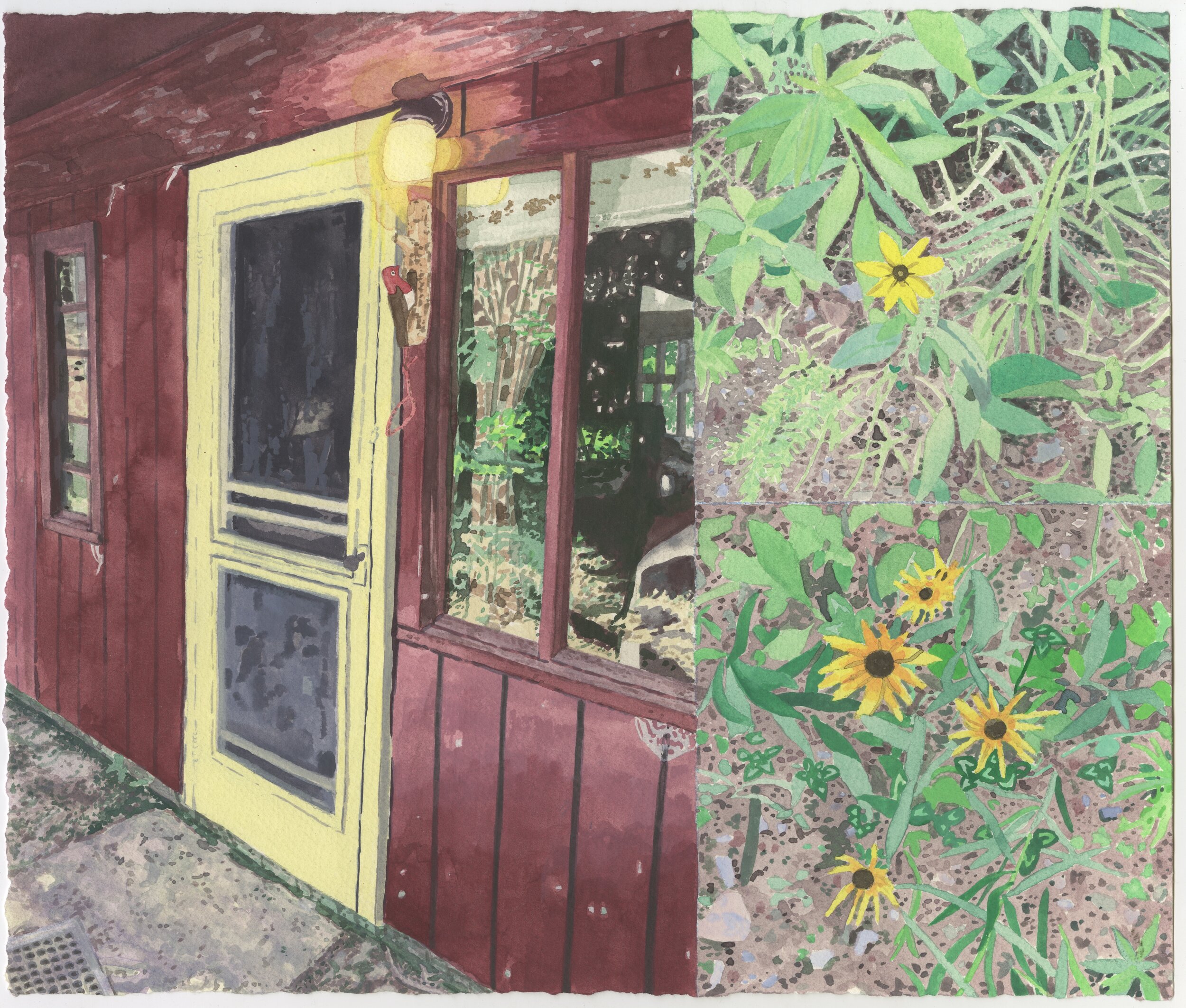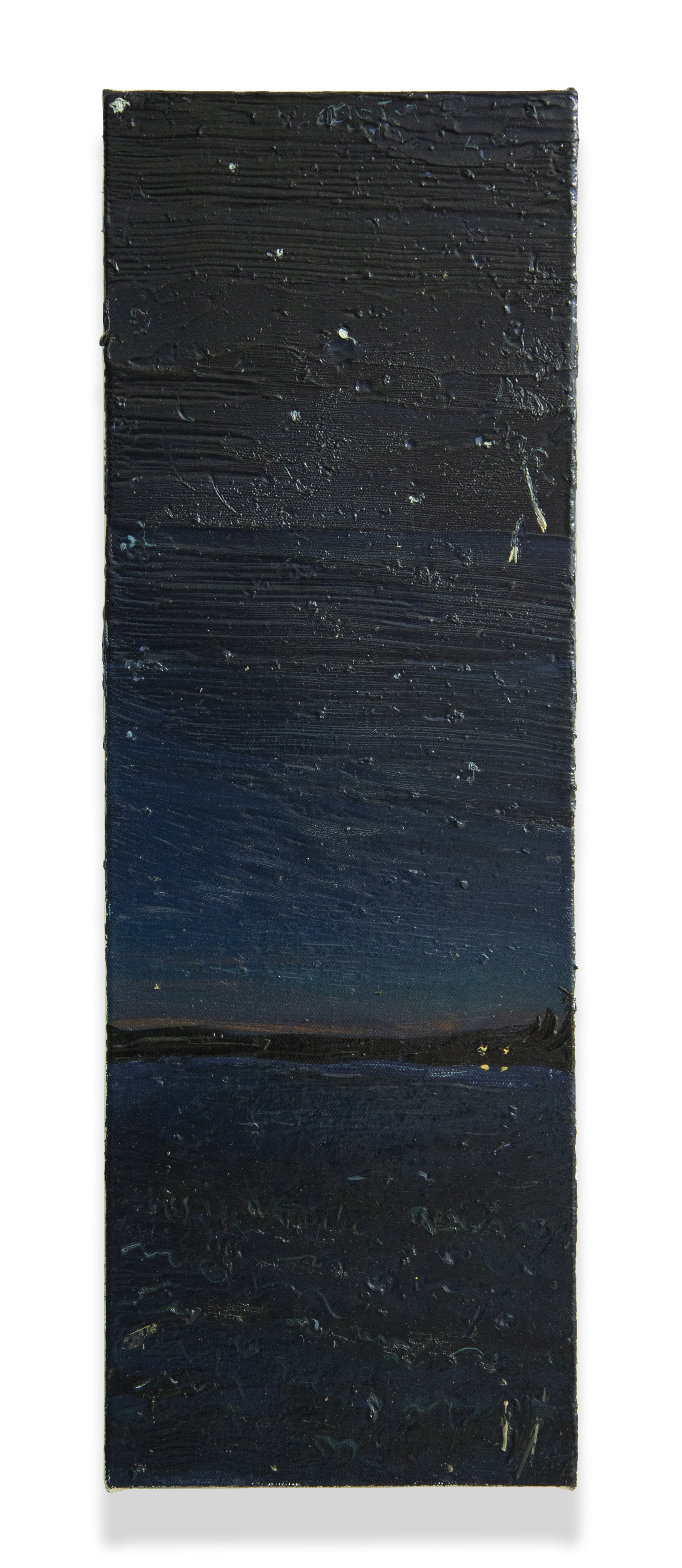In The Pines CURATED BY SAMUEL GUY NOVEMBER 23 — JANUARY 11, 2020
PRESS RELEASE
“In The Pines” examines the relationship between four artists as they respond to rural America. The show features work by Elizabeth Flood, Henry Glavin, Breehan James, and Gus Wheeler. Through their various engagements with landscape, each artist provides a complex narrative of personal and societal introspection. The fluid definition of landscape shifts between rigorous observation, memory, documentation, and the re-presentation of images.
Elizabeth Flood’s night paintings engage in the perceptual understanding of a place through their contradiction of intense observation and simultaneous obfuscation. In the process of painting through the night with the near absence of light, Flood provokes her sense of sight, challenging her ability to faithfully capture the landscape before her. As viewers, we see this again as we encounter an image which is primarily black.
Henry Glavin’s paintings act as a call and response to a remembered space. As images repeat, the fragility of memory is revealed in subtle shifts of light, color, and atmosphere. The architecture grounded in each landscape suggests an anthropomorphic quality, leading us to wonder if people in the artist’s life are being represented here.
Breehan James’ Cottage Book Pages depict her family’s cottage in Northern Wisconsin. Viewed from both interior and exterior perspectives, the paintings reflect her intimate relationship to the land, forming an integral part of her and her family’s identity. The time-capsule quality of the cottage, with its various tchotchkes and ephemera -- some of which appear as sculptural elements on the frames -- evoke a closeness and familiar association with place.
By contrast, the paintings exhibited by Gus Wheeler offer a different view of the bucolic setting. In his painting, Cabot’s Butter, he depicts the barn and pasture scene from the packaging on a stick of butter. This generic scene reminds viewers of its ubiquitous repetition in western imagery defined by signs of ruralism. Wheeler’s work points to the reality that our relationship to rural places is intertwined in folklore.
While each of the works in this exhibition share concerns for landscape, they also depict a sense of personhood. The absence of figures refers to individual perception, appearing in the form of cottages, gates, sheds, specks of light or as our imagined selves as we engage with mundane objects. The presence of past experience and viewership of space feels immediately present and simultaneously distant, impling the inability to fully understand that which we encounter.
Website
Henry Glavin elizabethfloodart.com breehanjames.com guswheeler.com










